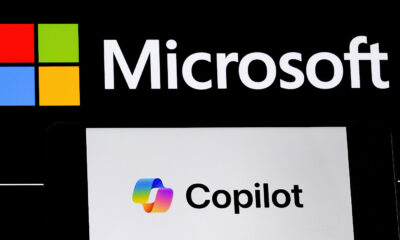SOCIAL
Meta Showcases New VR Building Tools, Which Will Facilitate Customized, Personalized VR Environments

Meta’s Horizon VR project is, in Mark Zuckerberg’s own words, core to its metaverse vision, offering the capacity to not only engage in wholly immersive digital spaces, but to also create your own, entirely new, interactive 3D environments, customized to your preferences, which could truly be a game-changing shift for VR interactivity.
But that’s no easy task. Creating objects in VR generally requires in-depth knowledge of design and 3D modeling, and there’s no simple way to build your own, custom VR space which you could then invite others to join.
Or at least, there hasn’t been till now. Check out this new demo of Meta’s in-development ‘Builder Bot’ process for Horizon Worlds.
Pretty amazing right? Meta is essentially building a VR construction process that won’t require any coding or design knowledge, or even any manual manipulation via 3D apps and tools. You’ll literally be able to speak things you want to see into existence.
There are obviously limitations to this. More specific placement and customization likely won’t be possible via simple commands, while it’s also restricted by Meta’s voice-to-object recognition capacity, and the pre-built 3D objects that Meta has available in its system.
But Meta’s also developing on these aspects as well.
On speech recognition, Meta’s new CAIRaoke project will eventually provide more capacity for contextual understanding and translation in speech, which could help it build a more inclusive, comprehensive data set for object matching within its Builder Bot process.
In terms of available objects, Meta’s also developing improved 3D scanning tools, which, thus far, have primarily been focused on expanding its eCommerce listings, by providing virtual displays of items, in their real-world dimensions, to add more context for shoppers.
As this initiative expands, you can imagine how Meta could eventually build a massive corpus of 3D objects, which could then be integrated into this new VR environment.
Essentially, the system would provide Meta with a double bonus – not only would it expand its available dataset of 3D furniture objects for display with its eCommerce listings and recommendations, but it would also facilitate a never-ending range of product additions for Horizon Worlds, which would then enable truly customized VR spaces.
When Meta talks about the metaverse not being built by any one company, I suspect this is what it’s talking about – through custom, branded worlds, businesses will eventually be able to create their own, fully immersive product and display environments, which will enable all new experiences with their offerings, and all new opportunities for marketing and customer engagement.
Though Meta, in the end, will be the one hosting the party, the one facilitating that connection – so the metaverse, as such, would be owned by Meta, but the experiences built within it will be constructed by many people, businesses and other organizations.
But in this scenario, Meta is the key facilitator, the key platform for next-level connection.
And you can see the appeal, it’s not hard to imagine some amazing new worlds being created within this space.
In some ways, it’s similar to Minecraft’s Partner Program for developers, which has lead to some of the most interesting re-purposes of the game’s mechanics, fueling all-new uses of the app, and launching development careers for many creators. Indeed, last year, Microsoft reported that the Minecraft Marketplace, which is made up of user mods and additions, had generated over $350 million thus far for the company, and with around 50% of that revenue going back to creators, it’s a powerful, valuable ecosystem for the game, and a key reason for its enduring popularity and success.
It’s also a strong signal for the potential of Meta’s VR building tools. Younger audiences are already well accustomed to building in such environments, and engaging in these new worlds, and it’s this demographic that Meta will be targeting with the next stage of its VR functionalities.
You could further add in its SLAM digital art tools to its VR building process, which enable creators to digitally ‘paint’ interactive works, and NFT content displays, potentially, which are currently being tested in Instagram. Put all of these together and you can see how Meta is evolving towards the next stage of VR connection, and how brands and businesses will eventually be able to build their own worlds within this space, fully aligned to their products and creations, and wholly developed with a view to integrating eCommerce, promotion, interaction and more.
All of this is not possible yet, and many companies seeking to jump on board the metaverse bandwagon right now are largely missing the point. But the next stage is coming, and it’s becoming clearer every day.
And if you think Meta won’t be winning, and won’t be a central player, if not the central player in that process, you too could be missing the broader context.
Source link













You must be logged in to post a comment Login